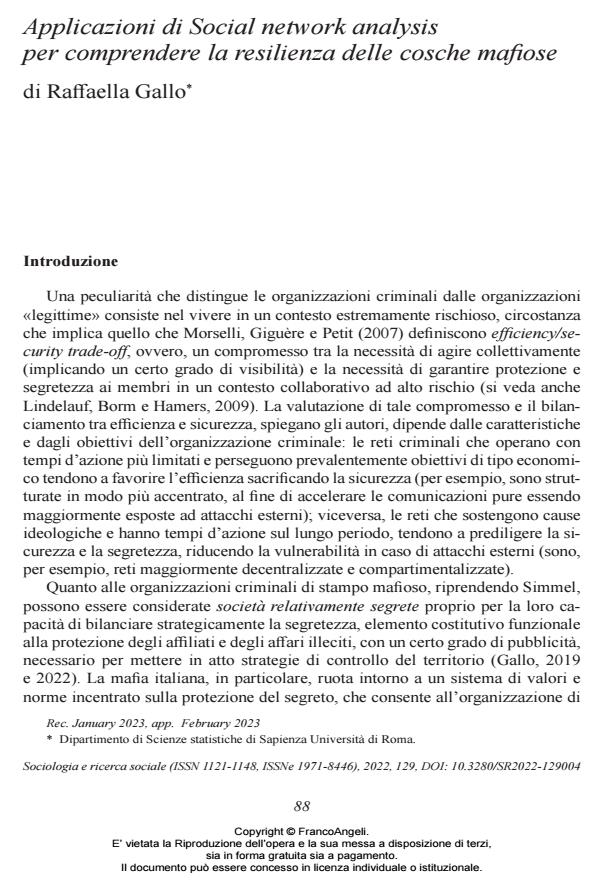Social Network Analysis applications to understand the resilience of mafia gangs
Journal title SOCIOLOGIA E RICERCA SOCIALE
Author/s Raffaella Gallo
Publishing Year 2023 Issue 2022/129
Language Italian Pages 14 P. 88-101 File size 308 KB
DOI 10.3280/SR2022-129004
DOI is like a bar code for intellectual property: to have more infomation
click here
Below, you can see the article first page
If you want to buy this article in PDF format, you can do it, following the instructions to buy download credits

FrancoAngeli is member of Publishers International Linking Association, Inc (PILA), a not-for-profit association which run the CrossRef service enabling links to and from online scholarly content.
With this work we want to is aimed at observing how the priority given to the group over the individual in mafia systems results in the clans’ sectarian structure, generating resilient criminal networks. This will be investigated by comparative analysis of the network of a mafia clan and the network of a non-mafia association. In particular, through different techniques of identification of relevant subjects in the networks, it will «test» the robustness of the two networks, removing those nodes that may represent weak points of the network. The aim is to of demonstrate that more robust networks, such as mafia networks, are configured for a different distribution and characterization of bridge nodes.
Raffaella Gallo, Applicazioni di Social network analysis per comprendere la resilienza delle cosche mafiose in "SOCIOLOGIA E RICERCA SOCIALE " 129/2022, pp 88-101, DOI: 10.3280/SR2022-129004